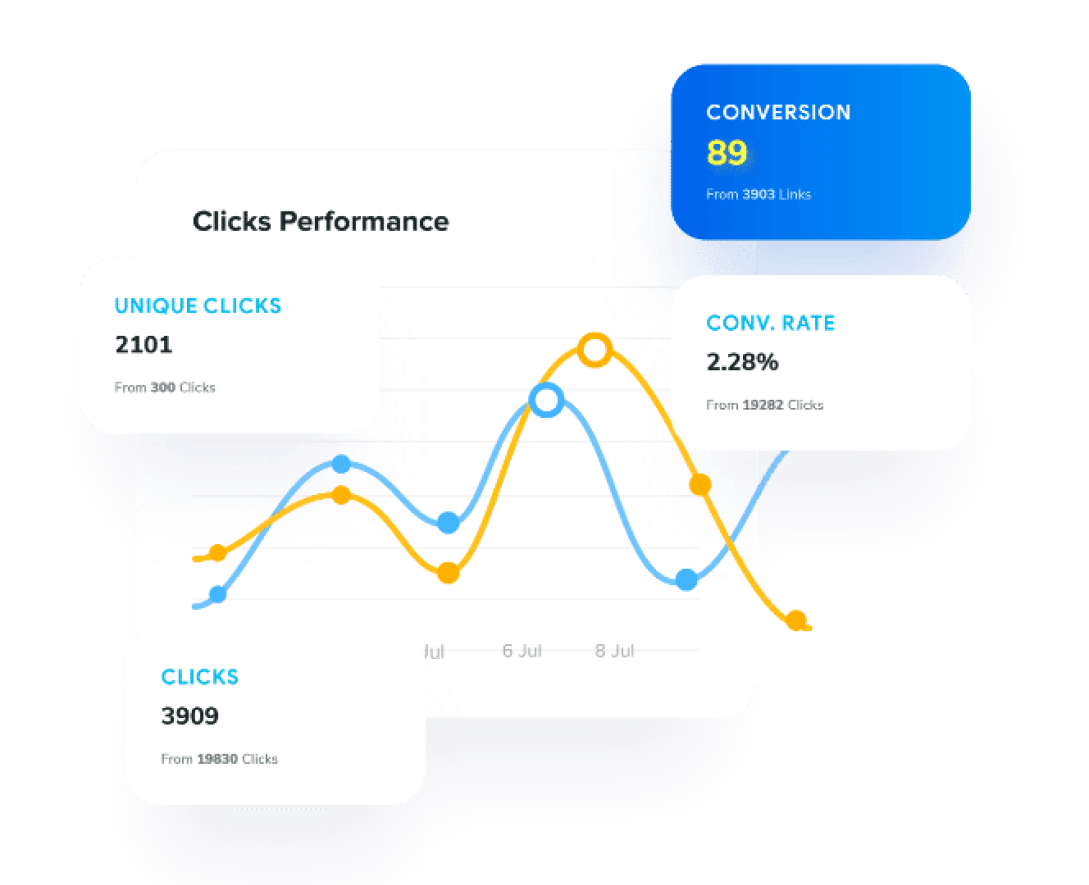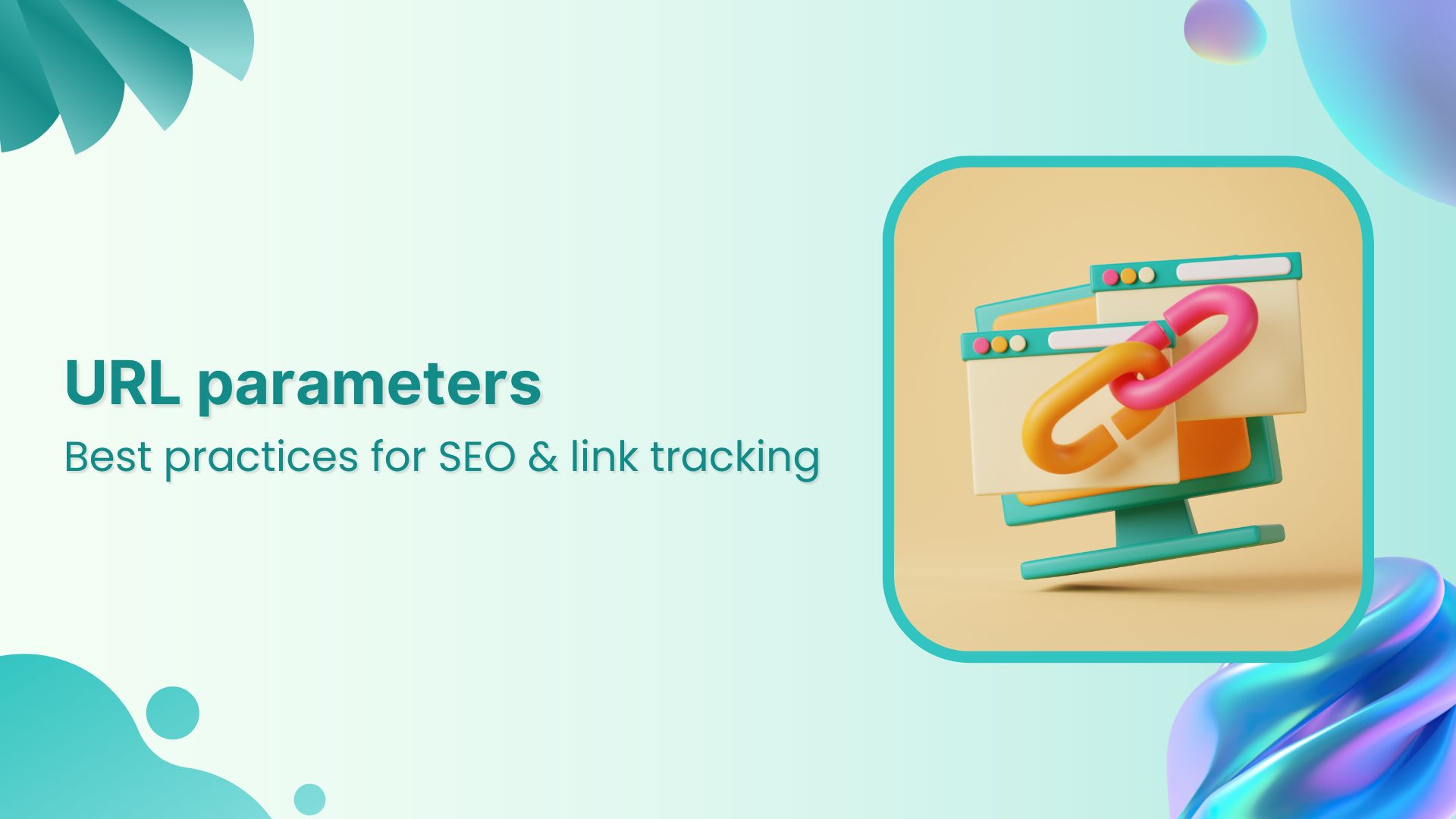Ever noticed those extra bits at the end of a URL, like? utm_source=google? They’re called URL parameters, and they can make or break your SEO strategy.
URL parameters are pieces of information added after a question mark (?) in a web address. They play a vital role in tracking visits, filtering products, and personalizing user experiences, making them essential for marketers, e-commerce stores, and content creators.
While parameters offer valuable benefits, mismanaging them can cause duplicate content issues, waste crawl budgets, and dilute ranking signals.
In this article, we’ll explore how URL parameters work, their SEO challenges, and best practices to optimize them. Plus, we’ll discover how Replug can help streamline your strategy while keeping your URLs clean and effective.
What are URL parameters, and how do they work?
What is a URL parameter?
A URL parameter is a snippet of text appended to a base URL. It usually starts with a question mark and includes one or more key-value pairs joined by an ampersand (&).
A sample URL could look like this:
- Base URL:
- Question mark (?): Signals the start of parameters
- Key-value pairs: category=shoes, color=red, size=9
- Ampersands (&): Separate multiple parameters
Related: Unique URLs: What they are and how to use them?
Types of URL parameters
URL parameters typically fall into two categories:
Active parameters
These influence what a user sees on a page. They help filter search results, change product listings, or adjust language settings. While useful for navigation, they can generate multiple URLs for the same content, leading to duplicate pages in search results.
Passive parameters
These do not change content but help with tracking and analytics. They are widely used in marketing for campaign performance tracking (e.g., UTM parameters). Unlike active parameters, they don’t impact what is displayed but can make URLs longer and harder to read.
| Parameter type | Purpose | Example | SEO impact |
| Active parameters | Directly modify page content or user experience. | ?category=shoes&size=9 (filters products) | Can cause duplicate content if not handled properly. |
| Passive parameters | Do not alter page content but track analytics or campaigns. | ?utm_source=facebook&utm_campaign=spring_sale | Generally do not affect SEO but can clutter URLs. |
Managing URL parameters efficiently
- Use canonical tags to specify the preferred version of a page.
- Keep tracking parameters minimal and consider tools like Replug for more SEO-friendly links.
- Use robots.txt or Google Search Console settings to control how search engines crawl parameterized URLs.
Common uses of URL parameters
When a user clicks a URL containing parameters, the browser sends a request with those parameters to the web server. The server then interprets the information to deliver the appropriate page, with or without filters or special settings.
Here are some common uses of URL parameters:
- Filtering and sorting content on an e-commerce site.
- Managing pagination (page=2 or page=3).
- Tracking visitor sources with UTM tags.
- Handling language preferences.
- Storing session-related data (less common today).
- Implementing dynamic advertising campaigns.
Common SEO challenges with URL parameters
1. Duplicate content
Search engines may identify multiple URLs showing similar content when parameters only alter minor details. Consider these links:
These pages may show the same product list with different filters, leading to duplicate content. Search engines could split ranking signals among these similar pages, weakening SEO performance.
Related: Top 11 benefits of eCommerce SEO
2. Crawl budget waste
Search engines allocate a certain amount of resources (crawl budget) to each site. Excessive parameter-based URLs can lead to repeated crawling of similar pages, preventing search engines from focusing on more important content.
3. Impact on ranking signals
Search engines might struggle to decide which URL to rank if your product pages exist in multiple forms. This confusion can distribute authority across multiple versions and reduce visibility.
4. URL readability
Parameters quickly make URLs long and confusing. A link packed with parameters is harder to share and remember.
5. Parameter interpretation
Google is skilled at interpreting pages with many URL parameters, but other search engines may not handle them as well. Maintaining a clean URL structure benefits all search engines.
Best practices for URL parameter implementation
1. Limit unnecessary parameters
Ask whether a parameter adds real value. If it only duplicates content, consider removing it. Use parameters only for actions that genuinely change or track distinct information on a page.
2. Use canonical tags wisely
A canonical tag guides search engines to your preferred URL, even if variations exist. Example:
<link rel=”canonical” href=”https://example.com/products” />
This tells search engines that:
is the primary version of the page, regardless of filtering or tracking parameters.
3. Choose clear parameter names
Short, logical names help users and search engines. For example:
✔ search=red_shoes instead of s=red_shoes
✔ page=2 instead of p=2
4. Avoid sensitive data in urls
Never append personal or sensitive data to parameters, as URLs are visible to anyone who has access to the link.”Improperly handled parameters are a common attack vector for SQL injection and data exposure,” according to Alex Lekander, the Editor-in-Chief and owner of the cyber news platform Cyber Insider.
5. Optimize tracking parameters
Tracking URLs with UTM parameters is crucial for marketing, but cluttered links can hurt user experience. Replug lets you create branded short links with custom UTMs, helping you track visits efficiently without compromising readability.
Shorten your links, amplify your brand.
Create shareable, trackable and fully customizable branded urls. Get more clicks with absolute link management features such as Bio Links, retargeting, deep Links, CTA’s and more.
Learn More!
6. Maintain consistent internal linking
Always use the same format for parameters in internal links. This helps search engines recognize pages as the same resource and reduces content duplication risks.
7. Use analytics tools
Google Search Console once had a URL parameters tool, but it’s no longer active. Instead, rely on structured design, noindex directives for non-essential pages, and tools like Replug for short linking and retargeting.
8. Regularly review and adjust parameters
Analyze your analytics data to see how parameters affect engagement. Look for unnecessary variations and refine your approach. Monitor URL performance using link management tools to ensure optimal visibility.
Final thoughts
URL parameters are powerful when used strategically. By balancing user experience with SEO best practices, you can track performance while keeping content optimized. Platforms like Replug simplify UTM tracking and branded links, making it easier to manage and optimize your parameter strategy.
Optimizing your URL structure ensures better search rankings, improved user experience, and more effective tracking, making your digital strategy more efficient and impactful.
Link Management Made Easy
Your go to link management tool for CTAs, branded and bio links, QR Codes, tracking and retargeting.
Get Started for FREE!
FAQs on URL parameters
Poor management can lead to duplicate content, wasted crawl budget, and diluted ranking signals. With proper canonical tags and minimal duplication, parameters can enhance user targeting without harming SEO.
The query string is everything after the question mark. Each item in the query string is a URL parameter. The terms are often used interchangeably.
There’s no fixed number, but fewer is generally better. Short, clear URLs improve user experience and shareability.
Yes. Many marketers use UTM parameters (source, medium, campaign) to track visitor origins. A platform like Replug helps manage these efficiently, offering clean, branded links that keep your URLs organized.
Use canonical tags, consistent linking, and noindex directives where needed. Prioritize a single, official URL to avoid dilution.

































